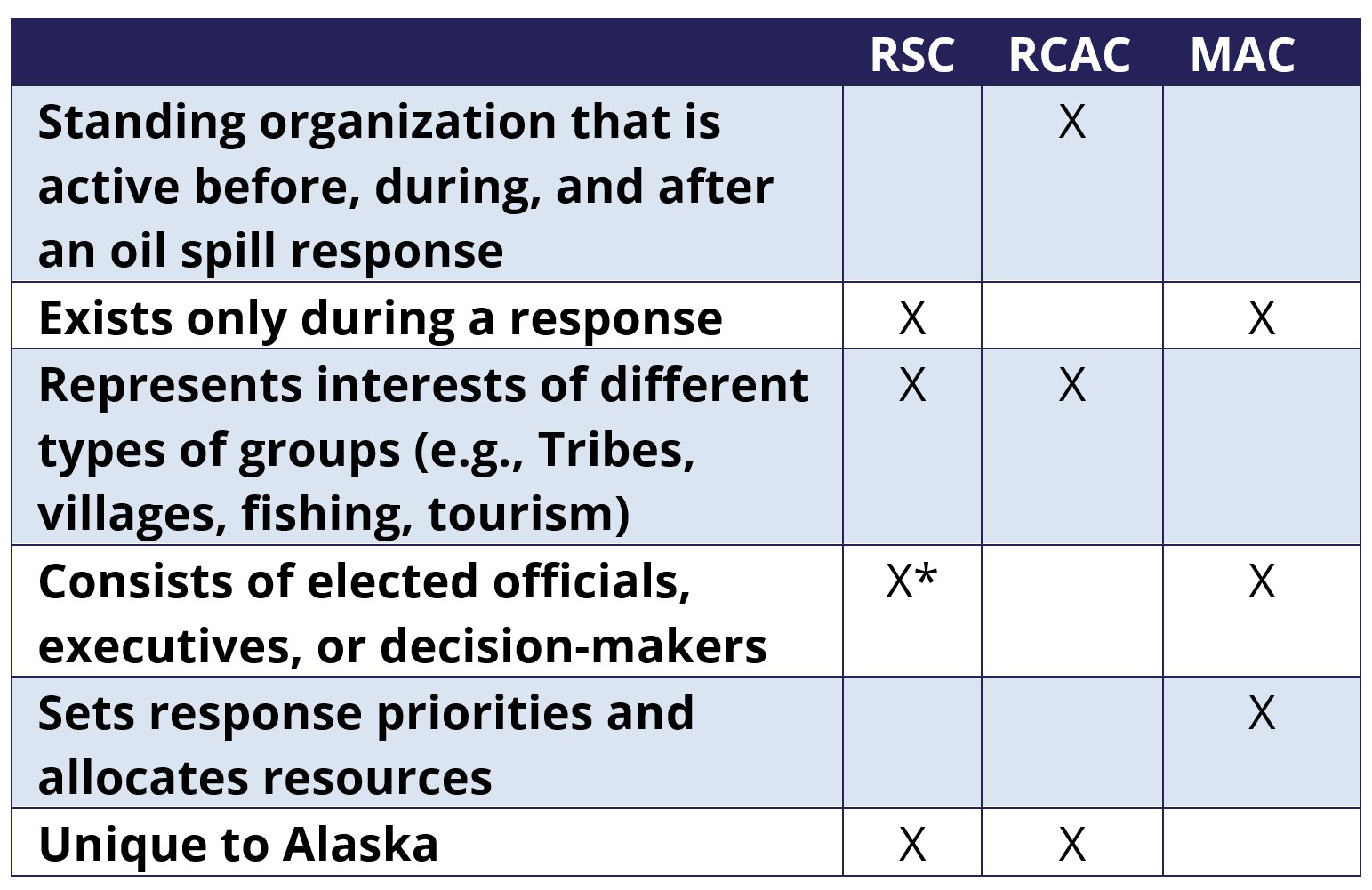RSC Home > More about RSC > How does RSC work? > Toolkit
According to the Prince William Sound Area Contingency Plan, a Regional Stakeholder Committee (RSC) will be set up by the response managers for “significant incidents that involve resources under the jurisdiction of several agencies.”
Who participates on an RSC?
RSC participants are invited by the Unified Command based on where the spill occurs and the area it appears likely to impact at the time. They may be community emergency coordinators or other local representatives, Tribal representatives, landowners, private organizations, or others.
The Prince William Sound Area Contingency Plan identifies the following possible participants in an RSC:
- Representatives or Community Emergency Coordinators from affected communities, which may include: Chenega, Cordova, Tatitlek, Valdez, Whittier
- Federally-recognized Tribes, Native corporations, organizations, or communities that own land in the affected area (note: participation in the RSC does not replace formal consultations with federally-recognized Tribes where required by law)
- Special interest groups affected by the incident
- Prince William Sound Regional Citizens’ Advisory Council (PWSRCAC)
Questions to consider: Who should serve on an RSC?
What kind of information does an RSC provide?
As described in the Prince William Sound Area Contingency Plan and job aid, the Unified Command will look to the RSC for three general types of information:
- Issues of local interest or concern –
While a spill may have long-term effects, the Unified Command will be most interested in the RSC’s immediate concerns (e.g., fishing or subsistence harvest areas in the path of the spill). - Resources
What can the community provide (e.g., accommodations, moorings, staging area space, information, etc.)?
What does the community need (e.g., information, supplies, transportation)? - Cleanup assistance
Who can help (e.g., local experts, vessel operators, equipment operators)?
What response equipment can the community provide, if any, that is not already part of the response (e.g., Personal Protective Equipment, heavy equipment)?
Helpful tool: Potential Community Concerns For RSC Members To Consider (PDF)
How is the RSC different from PWSRCAC or a Multi-Agency Coordinating Group (MAC)?

The RSC is unique to Alaska response policy and intended to provide a direct voice for stakeholders within the command structure. It is not the same as a regional citizens’ advisory council (RCAC), nor a Multi-Agency Coordinating (MAC) Group which is comprised exclusively of elected officials or other decision-makers.
The Prince William Sound Regional Citizens’ Advisory Council is a nonprofit organization founded after the Exxon Valdez oil spill. It is one of two RCACs formed under the Oil Pollution Act of 1990 (the other is the Cook Inlet Regional Citizens Advisory Council). Our Council is the only group named in the Prince William Sound Area Contingency Plan as automatically being included on an RSC for a spill affecting Prince William Sound.
Whether or not an RSC is formed, the Council will serve four key functions during a spill:
- Observe – Watch the response unfold both in the command post and field.
- Verify – Assess if response actions are appropriate, efficient, and successful.
- Inform – Let member entities know what is happening and gather their input.
- Advise – Pass concerns and recommendations to Unified Command and responders.
RSC Home > More about RSC > How does RSC work? > Toolkit